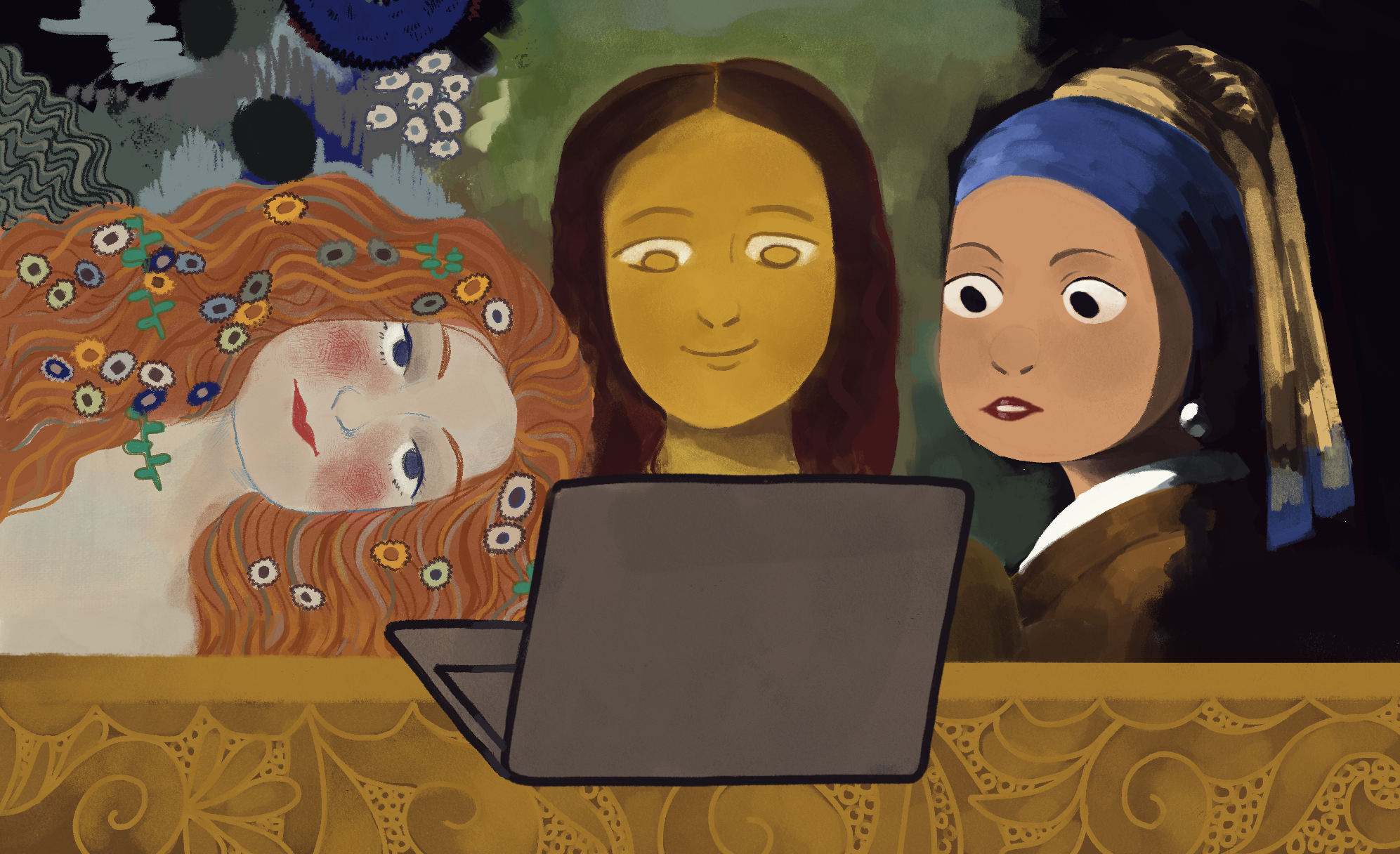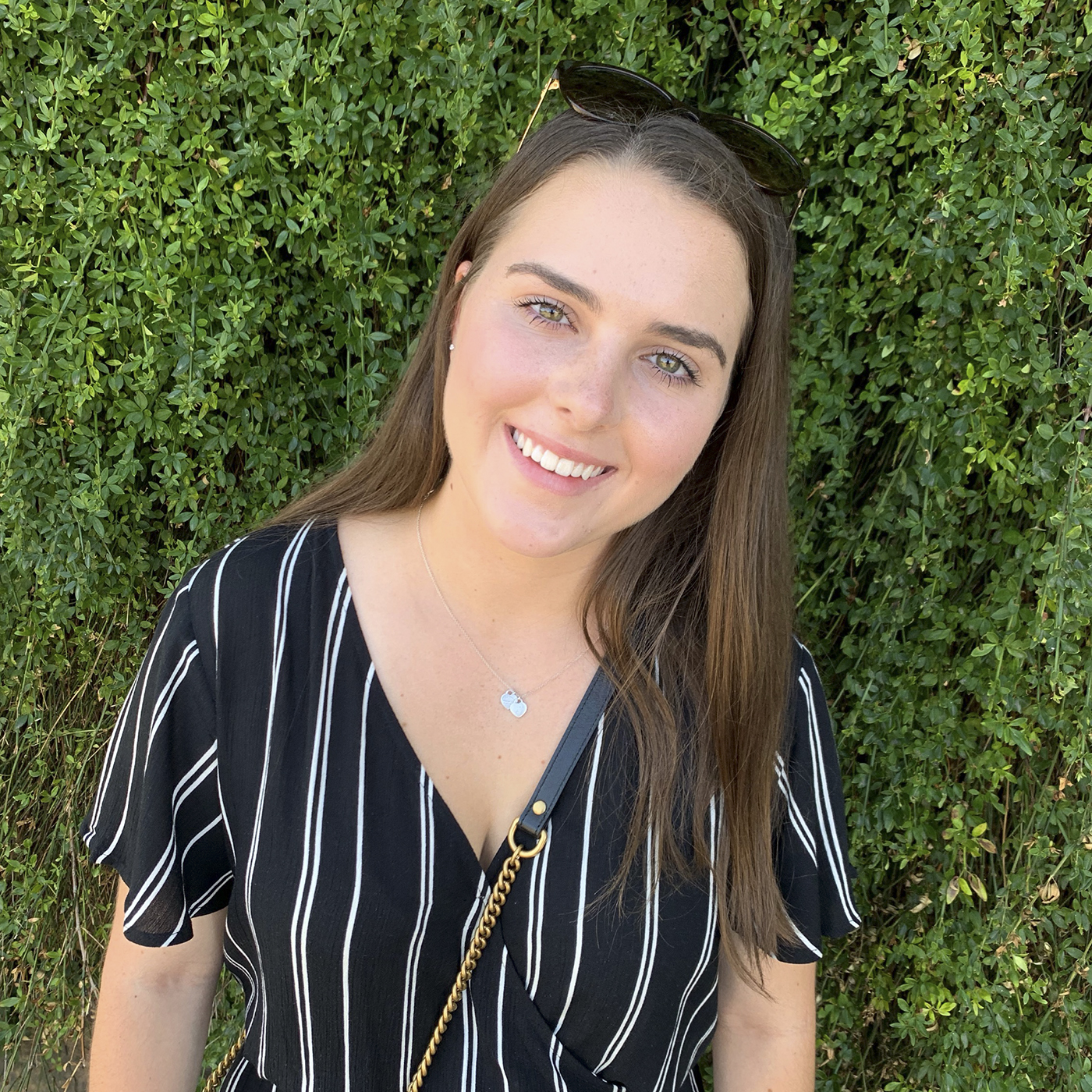Exploring how Los Angeles art museums have curated virtual visitor experiences

(Nghi Nguyen/Daily Bruin)
American museums have survived wars, famines and economic depressions. Even so, COVID-19 is proving difficult to navigate for some of Los Angeles’ most established institutions. Some museums have exhibition archives they can dip into, featuring walk-throughs or installation footage. While some museums have taken the time to build upon this resource, others have simply plopped it on the web.
Keep reading for Daily Bruin’s take on how the city’s popular art destinations are embracing the digital world.
Fowler Museum at UCLA
As UCLA began its rapid shutdown, the Fowler Museum at UCLA and its culture-centric curation were shuttered up alongside the rest of the campus. The Fowler has yet to adopt a digitally-first approach to its exhibitions, relying on archival footage hosted through Vimeo instead of developing interactive mediums for its current exhibitions. There are currently three exhibitions installed on-site, but only Rina Banerjee’s “Make Me a Summary of The World” has a walk-through video option.
Despite the magnetism and colorful eclecticism of Banerjee’s exhibit, the museum’s current stagnant slideshow format requires viewers to constantly fiddle with their keyboards to linger on the pieces’ intricacies. But a previous Fowler exhibit, “Striking Iron: The Art of African Blacksmiths,” offers viewers the user friendly experience they deserve. Currently stranded in Paris, the exhibition is showcased via a 3D exhibition model that remedies the drawback of recorded walk-throughs.
Similar to a virtual reality simulation, the interactive model encourages patrons to observe pieces at their own pace from limitless angles and viewpoints. This 3D model, along with 12 years worth of Fowler footage, is found on the museum’s Vimeo, offering patrons a look at exhibits missed by over a decade.
-Kennedy Hill
[Related: Music Preview: Rising artists span genres and embrace lyrical depth in recent releases]
Los Angeles County Museum of Art
The Los Angeles County Museum of Art has changed rapidly in the past month. COVID-19 forced its doors closed right before a $750-million demolition tore those same doors down for a controversial remodel. But, its adjustment to the digital consumption of art has been just as quick. Reaching into its extensive archive, Sarin Cemcem, a public programs data specialist for the museum, said LACMA was able to compile past exhibitions and supplementary content for its visitors online.
A user-friendly redesign of its website’s homepage organizes this content into categories of “watch,” “learn” and “listen,” among others, offering art that ranges mediums from film to articles. Although there is no replacement for the feeling of walking the halls of LACMA, Cemcem said her department strove to import the family-friendly, culturally-rich experience of a museum trip onto the computer screen.
LACMA’s digital museum provides deeper insight into its extensive network and influence through behind-the-scenes tours, curated soundtracks and artist interviews. As COVID-19 boarded its windows, this city institution opened its vault of artistic gems, urging its patrons to continue exploring the world from the confines of their couches.
-Kennedy Hill
The Hammer Museum
Prior to the COVID-19 pandemic, the Hammer Museum already had a robust archive of artist talks, lectures and performances which can be found under the easy-to-use Watch + Listen tab on the museum’s website. Offerings include videos of notable authors like Jamaica Kincaid, Tara Westover and Roxane Gay reading excerpts from their books. This page also features Q&A sessions on political issues with famous figures like actress Jane Fonda and filmmaker Rayka Zehtabchi. Nancy Lee, the senior manager of public relations at the Hammer Museum, said in an emailed statement that patrons can watch or rewatch some of these pieces, noting that revisiting existing content can lead to new ideas and conversations.
In addition to the digital catalog, the Hammer Museum has made some adjustments to increase community engagement online. Mindful Awareness Meditation sessions normally offered at the museum every Thursday from 12:30 p.m. to 1 p.m. will now be held on Zoom. These free weekly meditation sessions are led by Diana Winston, director of mindfulness education at the UCLA Semel Institute for Neuroscience and Human Behavior’s Mindful Awareness Research Center. According to the Hammer Museum’s website, practicing mindfulness is scientifically proven to help decrease stress and emotional volatility, making this service even more pertinent in the wake of COVID-19.
The Hammer Museum has also expanded access to digital archives of select exhibits like “Radical Women: Latin American Art, 1960–1985.” However, these exhibits are not user friendly. They are presented as a collection of images that require you to click on each one individually for details. Therefore, viewing an entire exhibit requires a great deal of clicking back and forth, creating a tedious user experience.
-Jenna Hajny
[Related: The Online Edition: The Adjustment Show]
The Getty Center
Amid the fear and anxiety caused by the spread of the coronavirus, the Getty Center is helping people find entertaining ways to pass the time at home. In late March, the museum challenged people to recreate their favorite works of art on Twitter. Examples of popular posts include Vincent Van Gogh pieces made from pasta noodles and interpretations of Claude Monet’s “Water Lilies” in one’s own backyard.
Aside from getting involved on social media, the Getty is offering video footage of current exhibits such as “Michelangelo: Mind of the Master.” The videos are accompanied by the commentary of curator Julian Brooks who provides viewers with a brief analysis of each piece in the exhibit. The videos are fairly short – only about a minute and a half. Their concise nature keeps the pace quick and viewers engaged.
Additional online resources include the Getty’s virtual library where more than 350 books on topics such as art conservation, architecture and photography can be downloaded for free. The museum’s website also features two podcast series: “Art & Ideas” and “Recording Artists: Radical Women.” Podcasts in the latter series include images of the artists’ work in a slideshow format which allows you to view them all up close within one browser, creating a streamlined user experience.
-Jenna Hajny


